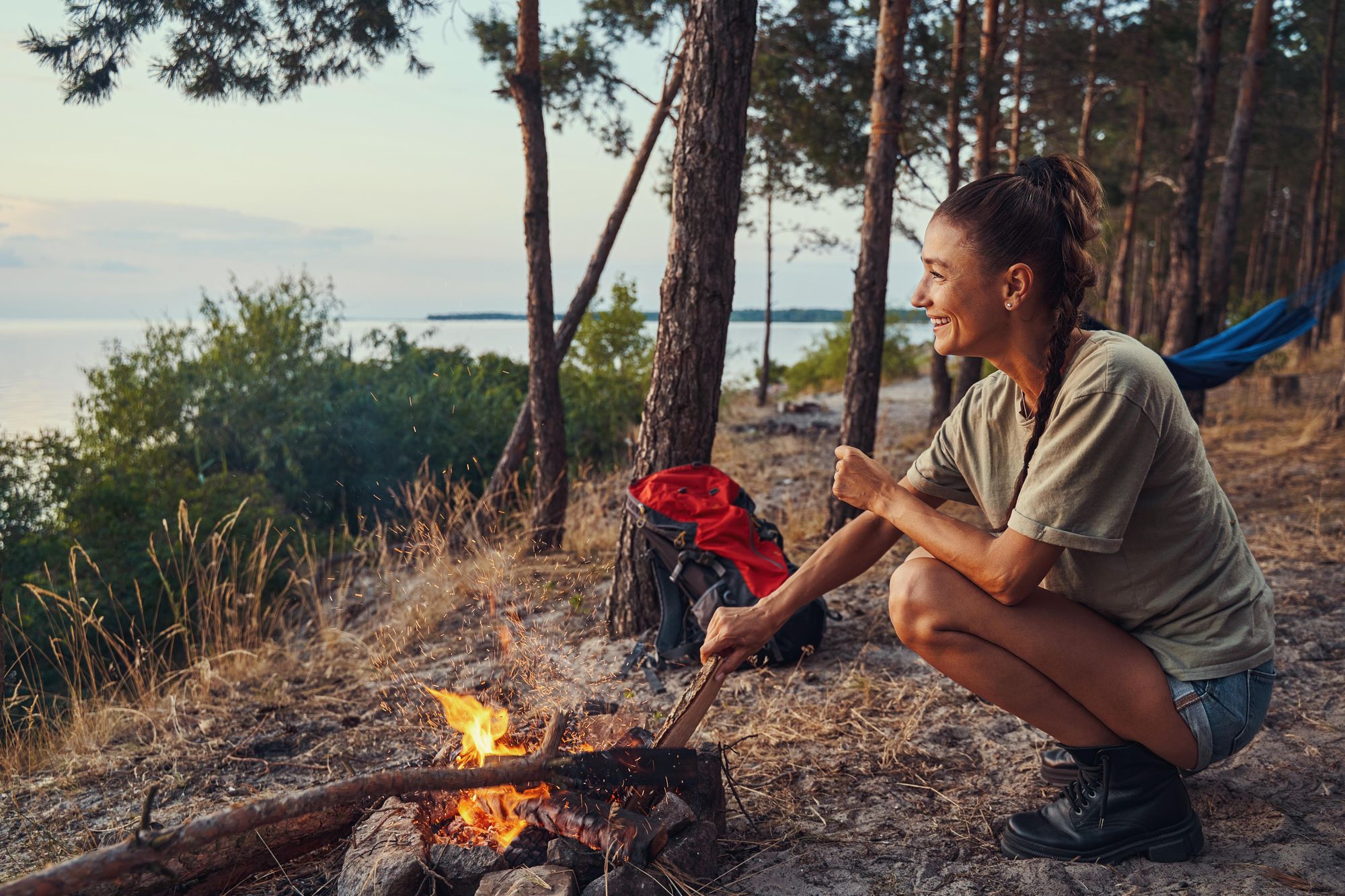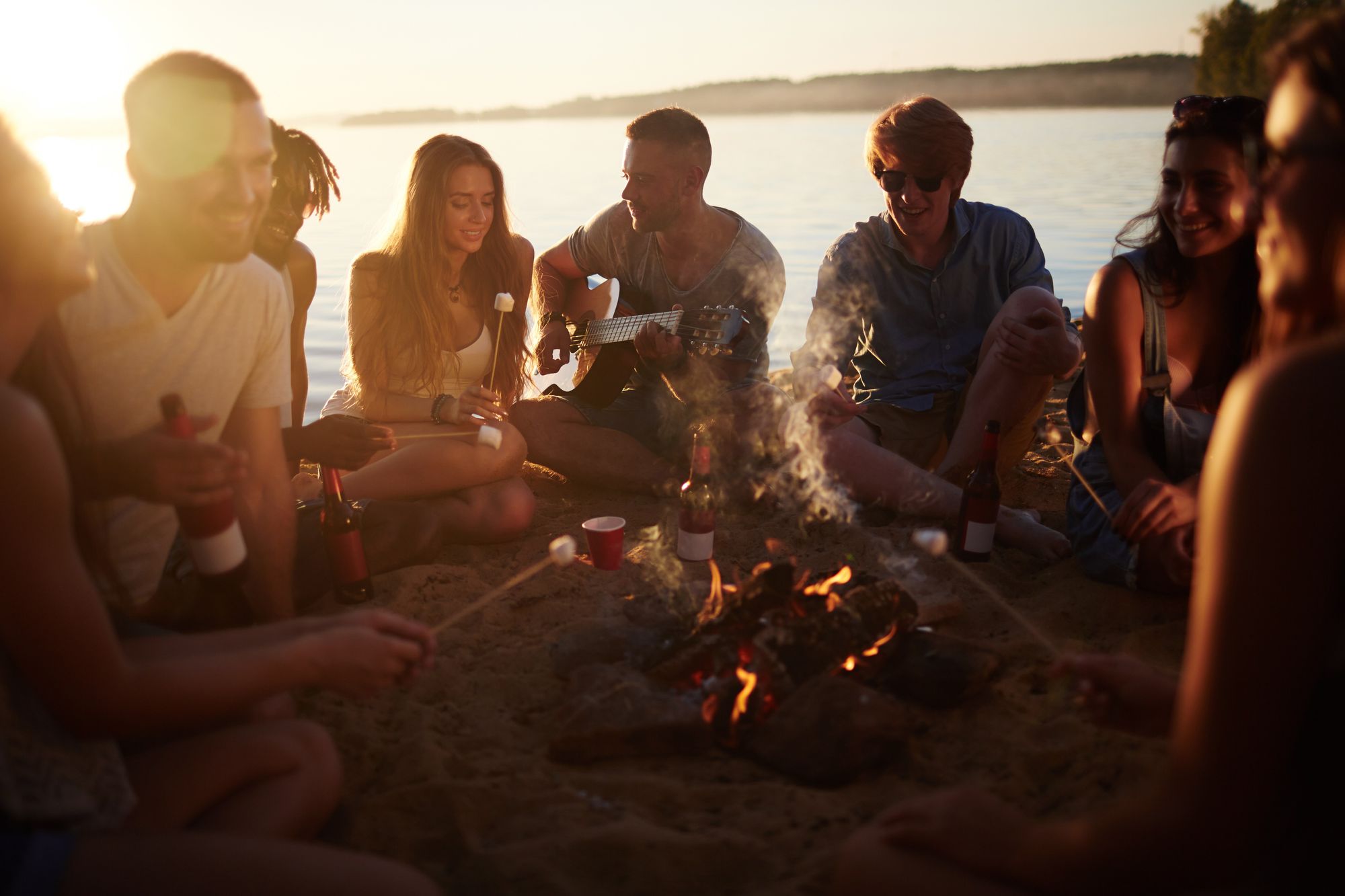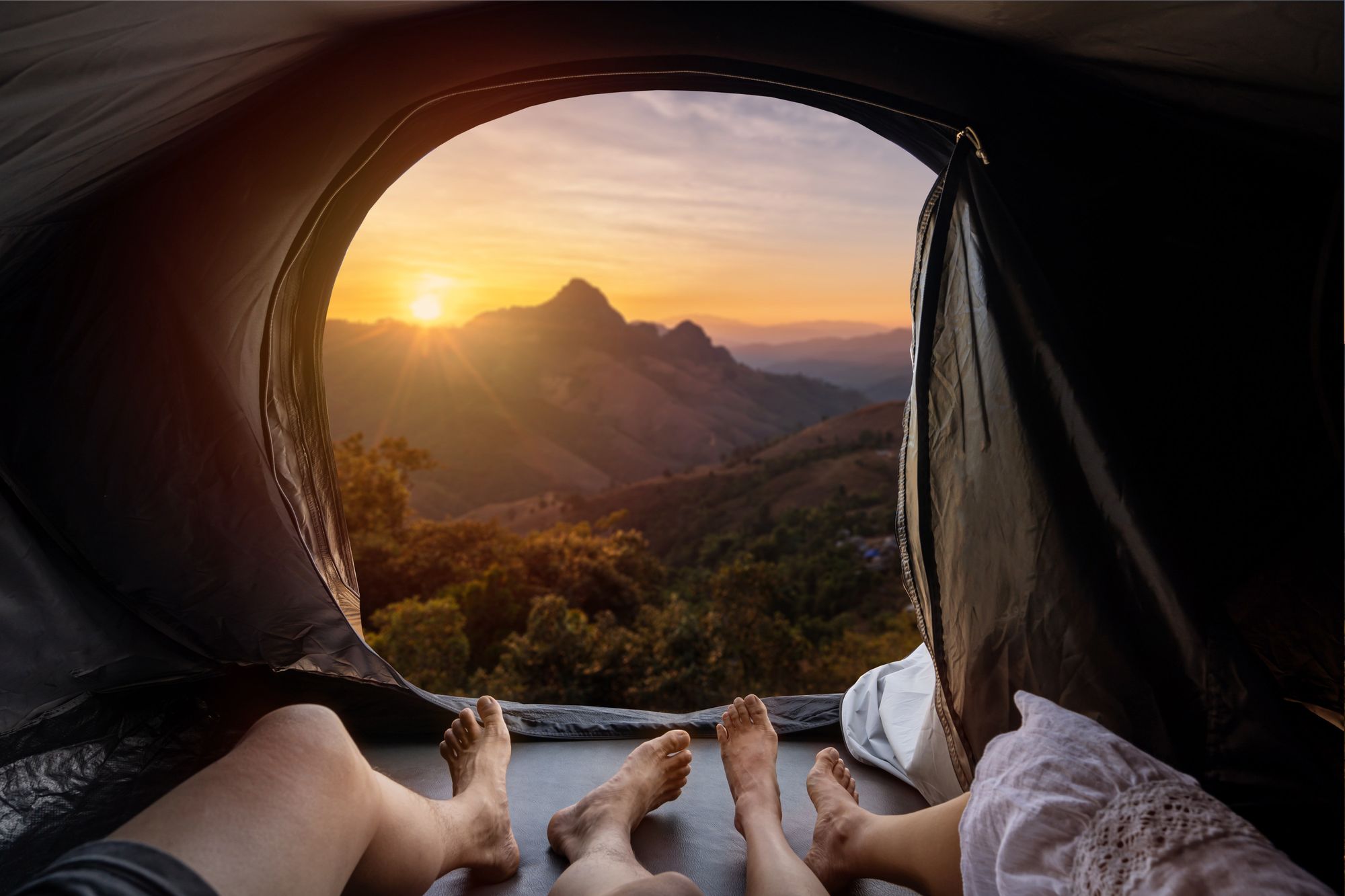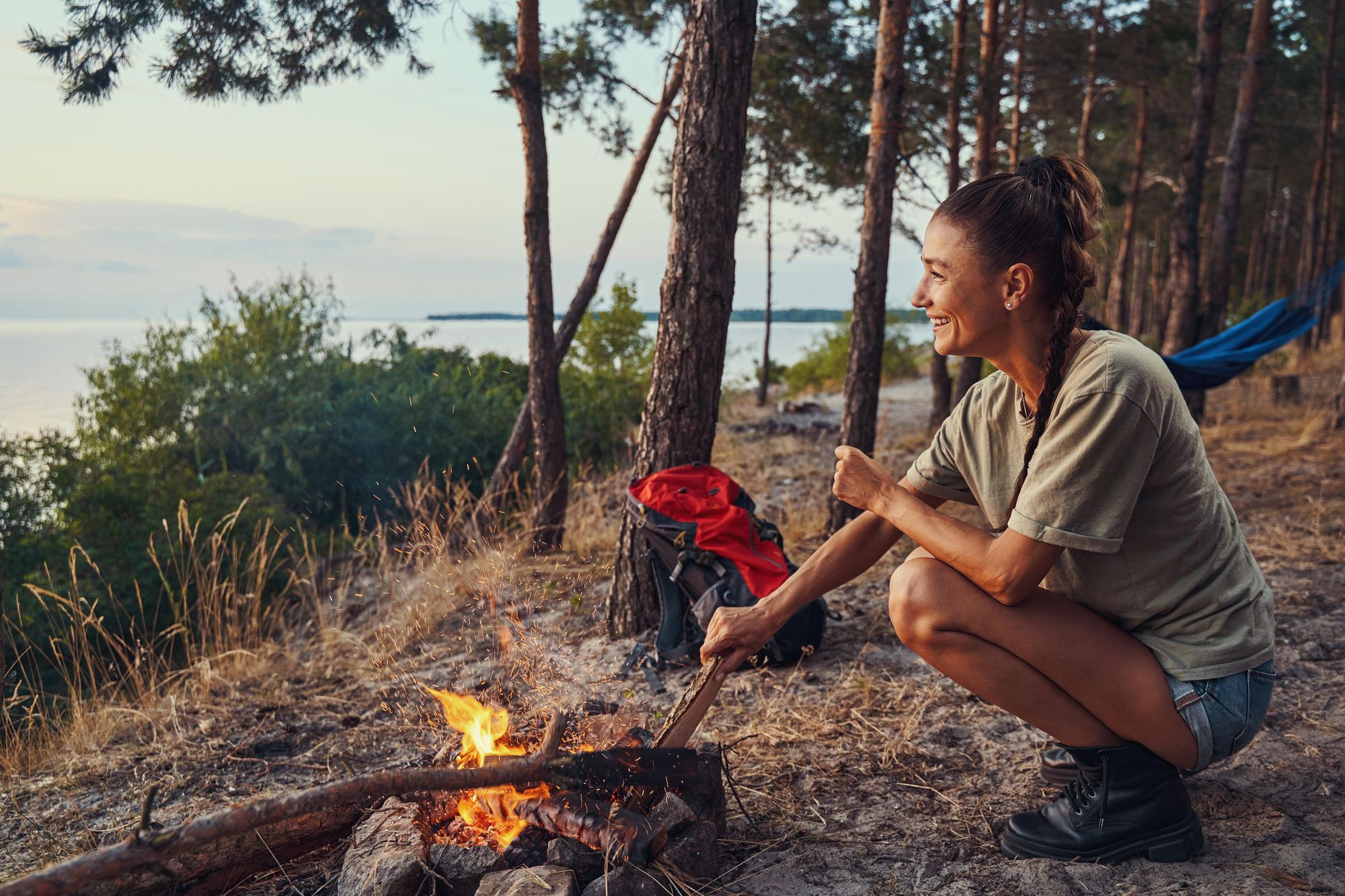Planning a camping trip can be a daunting task, especially for those who are new to the outdoor adventure. However, with the right preparation and mindset, anyone can enjoy the beauty of nature while having a comfortable camping experience. In this guide, we will provide you with valuable tips and tricks to survive and thrive during your camping trip.
First and foremost, it is essential to familiarize yourself with the location you will be visiting. Research the campground you have chosen, noting the amenities, facilities, and any specific rules or regulations you need to be aware of. This information will help you pack accordingly and ensure you have a seamless camping experience.
Next, it is crucial to create a comprehensive camping checklist. Start by making a list of essential camping gear, such as a tent, sleeping bags, cooking utensils, and clothing suitable for different weather conditions. Remember to include any additional items specific to your planned activities, such as hiking gear if you intend to explore the surrounding trails. A checklist will not only help you pack efficiently but also ensure you don't forget any essential items.
Once you have your gear ready, it's time to pack and organize your supplies. Consider using separate containers or bags to categorize similar items, making them easier to find when needed. Additionally, be mindful of weight distribution when packing your backpack or vehicle to ensure a balanced load while traveling to your camping destination.
As you step foot into the great outdoors, it's crucial to be mindful of Leave No Trace principles. These guidelines promote responsible outdoor practices and help preserve the natural environment for future generations. Remember to respect wildlife, dispose of waste properly, and leave your campsite as clean as you found it.
When it comes to food, planning meals in advance can simplify your camping experience. Prepare and pack non-perishable food items and snacks that are easy to cook or consume without refrigeration. Consider meal options that require minimal preparation and cleanup, such as pre- made foil packet meals or dehydrated camping meals.
Lastly, be prepared for unpredictable weather conditions. Check the weather forecast before leaving and carry appropriate clothing and gear to keep you comfortable during your camping trip. It's always better to be overprepared than caught off guard by unexpected rain or dropping temperatures.
By following these introductory tips, you'll be well on your way to having a successful camping adventure. Remember that preparation is key to enjoying your time in the great outdoors and embracing the simplicity and tranquility that nature has to offer.
Pack essential camping gear (Tent, sleeping bags, cooking equipment)
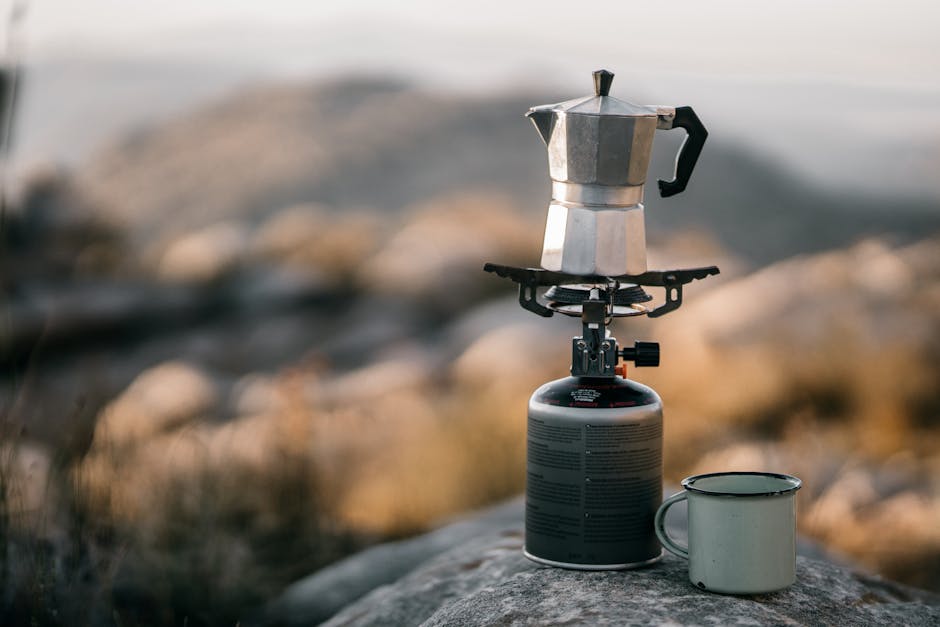
When it comes to camping, packing essential gear is key to ensure a successful and comfortable outdoor adventure. Whether you're a beginner or a seasoned camper, having the right equipment is essential for your safety and enjoyment. Here are some must-have items to include in your camping checklist:
1. Tent: A sturdy and waterproof tent is crucial for sheltering you from the elements. Look for a tent that is appropriate for the number of people in your camping group and provides enough space for everyone to sleep comfortably.
2. Sleeping bags: Choose sleeping bags that are suitable for the weather conditions you expect during your camping trip. Look for bags with appropriate temperature ratings to keep you warm at night. It's always a good idea to bring an extra blanket or sleeping pad for added comfort.
3. Cooking equipment: Camping is not just about enjoying the great outdoors; it's also about savoring delicious meals prepared in nature. Carry portable camping stoves or grills along with necessary cookware like pots , pans, and utensils. Don't forget basic supplies like matches , fuel, and food storage containers.
4. Lighting: As the sun goes down, having proper lighting becomes essential. Pack reliable flashlights or headlamps to navigate your campsite after dark. Consider solar-powered or battery-operated lanterns for ambient lighting and to create a cozy atmosphere around the campfire.
5. First aid kit: Accidents can happen anywhere, even on a camping trip. Be prepared with a well-stocked first aid kit, including bandages, antiseptic wipes, pain relievers, insect repellent, and any necessary prescription medications. Familiarize yourself with basic first aid techniques and emergency procedures before embarking on your trip.
6. Camp chairs and tables: Make your camping experience more comfortable by bringing portable chairs and folding tables. These items come in handy when you want to relax, enjoy a meal, or play card games around the campfire.
Remember, packing efficiently is crucial when you are limited on space and weight. Prioritize your essentials, and consider investing in quality gear that will last. Plan ahead and make a checklist to ensure that you have everything you need for a successful camping trip.
Prepare the right clothing and footwear for outdoor activities
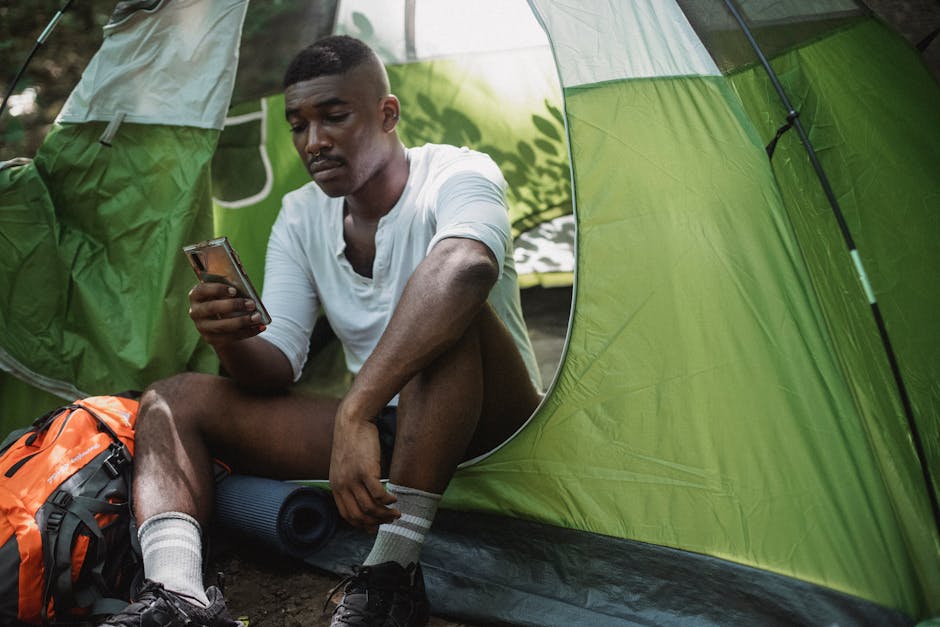
When embarking on a camping trip, it is crucial to prepare the right clothing and footwear for outdoor activities. The right attire will not only keep you comfortable but also protect you from the unpredictable elements of nature. Here are some tips to help you choose the perfect clothing and footwear for your camping adventure:
1. Comfortable and durable clothing: Opt for clothing made from moisture-wicking fabrics that dry quickly. This will help you stay cool in hot weather and prevent sweat from lingering on your skin, leading to discomfort. Choose loose-fitting clothes to allow for ease of movement when participating in various outdoor activities. Additionally, consider packing multiple layers to adapt to changes in temperature throughout the day or night.
2. Protection from the elements: Depending on the season and location of your camping trip, prepare to face different weather conditions . Always carry a lightweight and waterproof jacket or raincoat to protect yourself from sudden rain showers or chilly winds. Don't forget to pack a hat and sunglasses to shield yourself from the sun's harmful rays during daytime outdoor activities. If camping in colder climates, ensure you have thermal or insulating layers to keep you warm during chilly nights.
3. Proper footwear: Stable and comfortable footwear is essential for any outdoor adventure. Invest in a pair of sturdy hiking boots or trail shoes with excellent traction to navigate various terrains. Look for waterproof or water-resistant options to keep your feet dry in case of wet conditions. Don't forget to break in your new footwear before your camping trip to avoid blisters and discomfort while exploring the great outdoors.
4. Extra socks and accessories: Always pack extra pairs of socks to keep your feet dry and prevent blisters. Opt for moisture-wicking and cushioned socks designed specifically for outdoor activities. Additionally, consider wearing gaiters to protect your shoes and lower legs from debris, water, or snow. These can be particularly useful if you plan on hiking through rough terrains or encountering wet conditions.
Remember, choosing the right clothing and footwear for your camping trip is crucial to ensure your overall comfort and safety. By investing in quality gear and planning ahead, you can confidently enjoy the great outdoors, no matter what mother nature throws your way.
Bring enough food and water supplies (Plan meals and snacks)

When planning a camping trip, it's essential to ensure that you bring enough food and water supplies to keep you fueled and hydrated throughout your outdoor adventure. Here are some tips to help you plan your meals and snacks effectively:
1. Make a detailed meal plan: Before heading out, create a meal plan for each day of your trip. Consider the number of people in your group, their dietary preferences, and the duration of your camping excursion. Having a plan will ensure that you bring all the necessary ingredients and avoid food waste .
2. Pack non-perishable foods: Opt for non-perishable foods that are easy to transport and require minimal preparation . Canned goods, dried fruits, granola bars, nuts, and seeds are great options for snacks, while pasta, rice, and canned soups make for hearty and straightforward camping meals.
3. Consider your cooking equipment: Depending on the type of camping you'll be doing, you may have access to a campfire, a camping stove, or simply a portable grill. Plan your meals accordingly, and factor in the cooking equipment you'll have available. Foil packets with veggies, meat, and seasonings can be cooked over a fire or grill, while one-pot meals can be made on a camping stove.
4. Don't forget the essentials: Stock up on essential ingredients like salt , pepper, oil, and spices to enhance the flavor of your meals. Additionally, make sure to pack utensils, plates, cups, and cookware suitable for camping. Disposable options can be more convenient, but remember to dispose of them responsibly.
5. Hydrate properly: Staying hydrated is crucial when spending time outdoors, especially during physical activities such as hiking or biking. Pack plenty of water bottles or invest in a portable water filter system to ensure a reliable supply of freshwater during your camping trip.
Remember, proper meal and snack planning will not only keep you satisfied and energized but also minimize waste and ensure a seamless camping experience. So, take the time to plan your meals and pack accordingly, and you'll be well-prepared to enjoy your time in the great outdoors.
Learn basic camping skills (Fire starting, setting up a tent, knot tying)
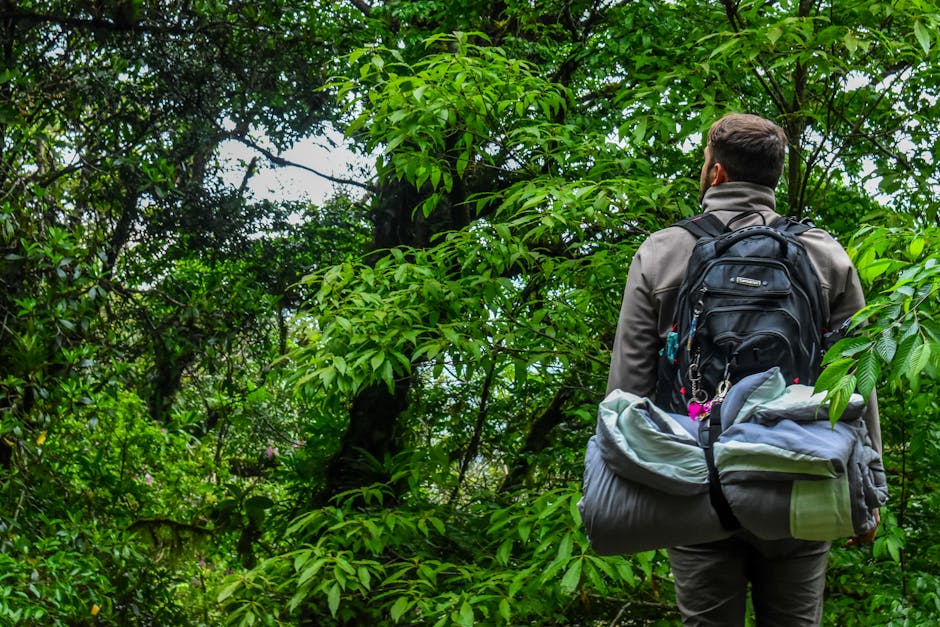
Camping is a great way to disconnect from the busy modern world and reconnect with nature. However, to fully enjoy your camping experience, it's essential to have some basic camping skills under your belt. In this section, we will cover a few essential skills that every camper should learn – fire starting, setting up a tent, and knot tying.
First, let's start with fire starting. Having a fire not only provides warmth but also serves as a focal point for socializing and cooking food. To start a fire, gather dry materials such as twigs, leaves, and small branches. Create a base using larger sticks or pieces of firewood, leaving enough space for oxygen to flow. Use matches or a lighter to ignite the tinder, which can be dry grass or paper, and gradually add more small twigs and branches to build the fire. Remember to never leave a fire unattended and to extinguish it completely before leaving.
Next up, setting up a tent is crucial for a comfortable camping experience. Begin by selecting a suitable spot that is level and away from any potential hazards like loose rocks or overhanging branches. Lay out your tent's groundsheet to protect the floor from moisture. Next, unfold the tent and assemble the poles according to the manufacturer's instructions. Insert the poles into the designated sleeves or clips on the tent, then stake down the corners of the tent and tighten the guylines for stability. Finally, attach the rainfly to ensure proper protection from the elements.
Lastly, mastering a few basic knots can greatly assist you in various camping situations. The most common knot used when camping is the square knot, which is useful for securing items like tarps or tying two ropes together . To tie a square knot, cross the left end over the right, then bring the right end over the left and through the loop created. Pull both ends to tighten the knot securely. Additionally, learning the bowline knot is essential for tasks like hanging a bear bag or securing a rope to a fixed point. This knot forms a secure loop that is easy to tie and untie, making it ideal for various camping scenarios.
Learning these basic camping skills will not only make your camping trip more enjoyable but also contribute to your overall safety and comfort. Remember, practice makes perfect, so don't hesitate to test your skills at home before heading out into the wilderness. With these skills in your arsenal, you'll be well-prepared to embark on a successful camping adventure.
Be prepared for various weather conditions (Rain gear, sun protection)

When embarking on a camping adventure, it is crucial to be prepared for the unpredictable nature of weather conditions. Whether you are venturing into the wilderness or staying at a designated camping ground, being equipped with appropriate gear for different weather scenarios is essential to ensure a safe and enjoyable experience.
Rain gear is an indispensable item to pack when preparing for camping. Even if the weather forecast predicts clear skies , unexpected showers can often catch campers off-guard. Investing in a high-quality waterproof tent, along with rain fly and groundsheet, will provide a sheltered and dry space during downpours. Additionally, packing adequate raincoats, waterproof pants, and boots will keep you dry and comfortable while exploring the great outdoors.
Equally important is protecting yourself from the harsh sun rays. Sunburns and heat strokes can quickly turn a camping trip sour. Carrying sunscreen with a high SPF and regularly applying it throughout the day is imperative to shield your skin from harmful UV rays. Wearing a wide-brimmed hat and sunglasses will protect your face and eyes from sun damage, while lightweight, breathable clothing with long sleeves will prevent sunburns and keep you cooler.
It is also wise to bring along other weather-related essentials that may come in handy during your camping excursion. Packing a portable and reliable weather radio will keep you updated on any sudden changes in the forecast, allowing you to adapt your plans accordingly. Having a small, compact umbrella can provide temporary protection from rain showers or serve as shade from the scorching sun. Lastly, packing an extra tarp or two is never a bad idea as they can be used to create a makeshift shelter, protect your gear, or even provide extra insulation for your tent if temperatures drop unexpectedly .
By being prepared for various weather conditions, you can minimize the impact of volatile weather on your camping trip. Remember, proactively equipping yourself with rain gear and sun protection will help ensure that you stay dry, comfortable, and safe throughout your outdoor adventure.
Pack proper lighting tools (Flashlights, headlamps, spare batteries)
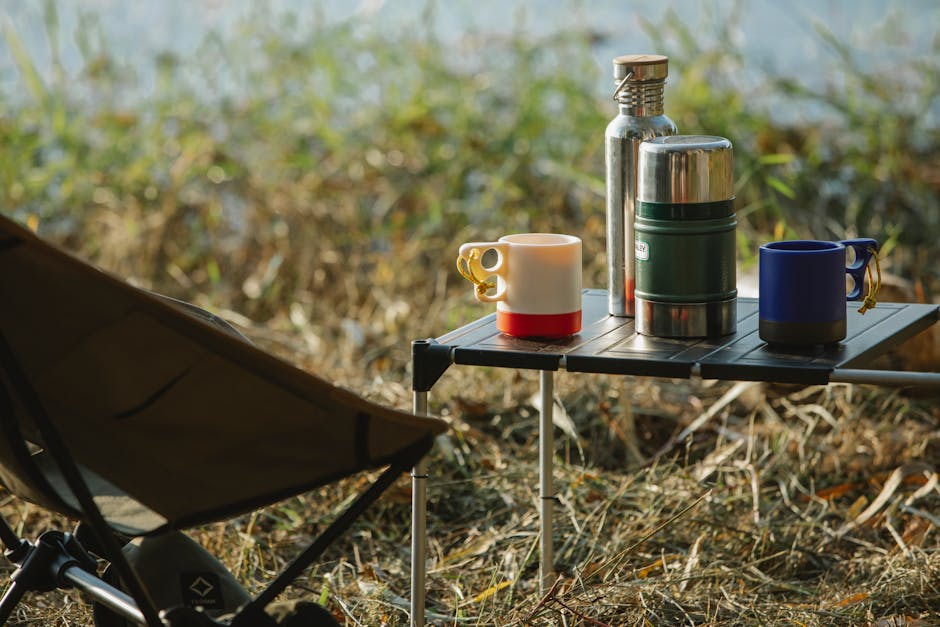
When it comes to camping, having proper lighting tools is essential for a successful and enjoyable experience. Whether you're camping in the wilderness or at a designated campground, adequate lighting not only helps with visibility but also ensures your safety and enhances the overall ambiance of your camping site. Here are a few lighting tools that you should consider packing for your next camping trip:
1. Flashlights: A good quality flashlight is a must-have item in your camping gear. Opt for LED flashlights as they are durable, energy-efficient, and provide a bright illumination. Pack a couple of flashlights so that each member of your camping group has one readily available. Keep spare batteries handy or choose rechargeable flashlights to avoid any unexpected power outages during your trip.
2. Headlamps: Headlamps are incredibly useful for hands-free lighting. They are worn on the head, leaving your hands free to set up tents, cook meals, or perform any other camping tasks. Headlamps are particularly handy during nighttime bathroom trips or when you need to navigate through dark trails. Look for headlamps with adjustable brightness settings and comfortable straps for maximum convenience.
3. Spare batteries: It's always wise to carry extra batteries for your lighting tools. While LED flashlights and headlamps are energy-efficient, it's better to be safe than sorry. Investing in rechargeable batteries and bringing a portable charger can also be a great eco-friendly and cost-effective option for longer camping trips.
4. Lanterns: Lanterns can provide ambient lighting and serve as a centerpiece for your camping site. Consider lanterns that use LED lights as they consume less power and have a longer lifespan. Some lantern models come with adjustable brightness levels and even offer additional features like USB ports for charging your devices.
5. Solar-powered lighting: To embrace sustainability and reduce your battery dependency, you can consider including solar-powered lighting in your camping gear. Solar lanterns and string lights are efficient alternatives that harness solar energy during the day and provide illumination throughout the night. They are environmentally friendly and can save you from constantly buying and replacing batteries.
Remember to thoroughly test your lighting tools before embarking on your camping trip to ensure they are in proper working condition . Additionally, it's a good idea to have a designated area in your camping gear where all the lighting tools are stored together for easy accessibility. By packing the right lighting tools, you'll be well-prepared to enjoy your camping adventure, even after the sun goes down.
Follow proper safety protocols (Know emergency numbers, inform someone about your trip)

When embarking on a camping adventure, it is imperative to prioritize safety above all else. While immersing yourself in nature and enjoying the great outdoors, it is important to be prepared for any unforeseen circumstances. In order to ensure a safe and hassle-free camping trip, it is essential to follow proper safety protocols .
Firstly, familiarize yourself with the emergency contact numbers for the area where you will be camping. This will enable you to quickly and efficiently seek help in case of emergencies or accidents. Write down these numbers and keep them in a visible and easily accessible place, such as your tent or backpack. Additionally, ensure that your mobile phone is fully charged and has a signal reception in the camping location.
Moreover, always inform someone trustworthy about your camping trip. Share details of your itinerary, including the dates and location where you will be staying. This will provide peace of mind to both you and your loved ones. In case of any unexpected situations, such as becoming lost or facing inclement weather, your designated emergency contact will be aware of your whereabouts and able to seek help on your behalf.
Another vital safety measure is to research and understand the potential risks associated with the camping site. This knowledge will allow you to take necessary precautions. Familiarize yourself with the local wildlife, plants, and any potential dangers specific to the area. By doing so, you will be better equipped to respond appropriately and avoid any unnecessary mishaps.
In conclusion, following proper safety protocols is crucial when embarking on a camping trip. Knowing the emergency contact numbers, informing someone about your trip, and being aware of potential risks in the camping location are key factors in ensuring a safe and enjoyable experience. By prioritizing safety, you can fully immerse yourself in the wonders of nature, while minimizing any potential risks.
Respect the wildlife and environment (Leave no trace, keep a safe distance from animals)

When venturing into the great outdoors, it is crucial to remember that we are merely visitors in the territory of the wildlife and that all living creatures deserve our respect. Here are some important guidelines to follow to ensure we leave no trace and maintain a safe distance from the animals during our camping trips.
1. Leave no trace: As responsible campers, it is our duty to leave the environment as we found it or even better. This means cleaning up after ourselves and disposing of waste properly. Pack out everything you bring with you, including food scraps, plastic wrappers, and all other trash. By doing so, we keep the natural surroundings clean, prevent harm to animals, and preserve the integrity of the ecosystem.
2. Minimize human impact: When camping, try to choose designated camping areas already established to reduce the environmental impact. Avoid trampling on fragile vegetation, disturbing animal habitats, or altering the surroundings. By minimizing our presence, we can allow the wildlife to thrive undisturbed.
3. Respect wildlife: It is tempting to approach or interact with animals we encounter in the wild, but it is essential to remember that they are not domesticated pets. Keep a safe distance and observe them from afar. Use binoculars or a zoom lens on your camera to capture the beauty of wildlife without intruding on their space. It is crucial to remember that animals are unpredictable, and approaching them can put both them and us in danger.
4. Keep food secure: Animals have an incredible sense of smell and may be attracted to the scents of food in our campsite. To avoid unwanted encounters with wildlife, store your food securely in sealed containers or lockable coolers. Consider using bear canisters or designated wildlife- proof food storage techniques , especially in areas where bears or other larger animals are present. This practice protects both the animals from harm and ourselves from potentially dangerous situations.
5. Be mindful of noise: Loud noises can be disruptive to wildlife, causing unnecessary stress and disturbance to their natural routines. Keep voices down, avoid playing loud music , and be considerate of the tranquility of the wilderness. By maintaining a peaceful environment, we can have a more immersive camping experience and allow the animals to go about their daily activities undisturbed.
Remember, when we venture into the wilderness, we become ambassadors for conservation and preservation. By respecting the wildlife and environment, we not only ensure the safety of ourselves and the animals but also contribute to the long-term sustainability of these natural habitats. Let us leave only footprints and take away memories while protecting the wonders that nature has to offer.
